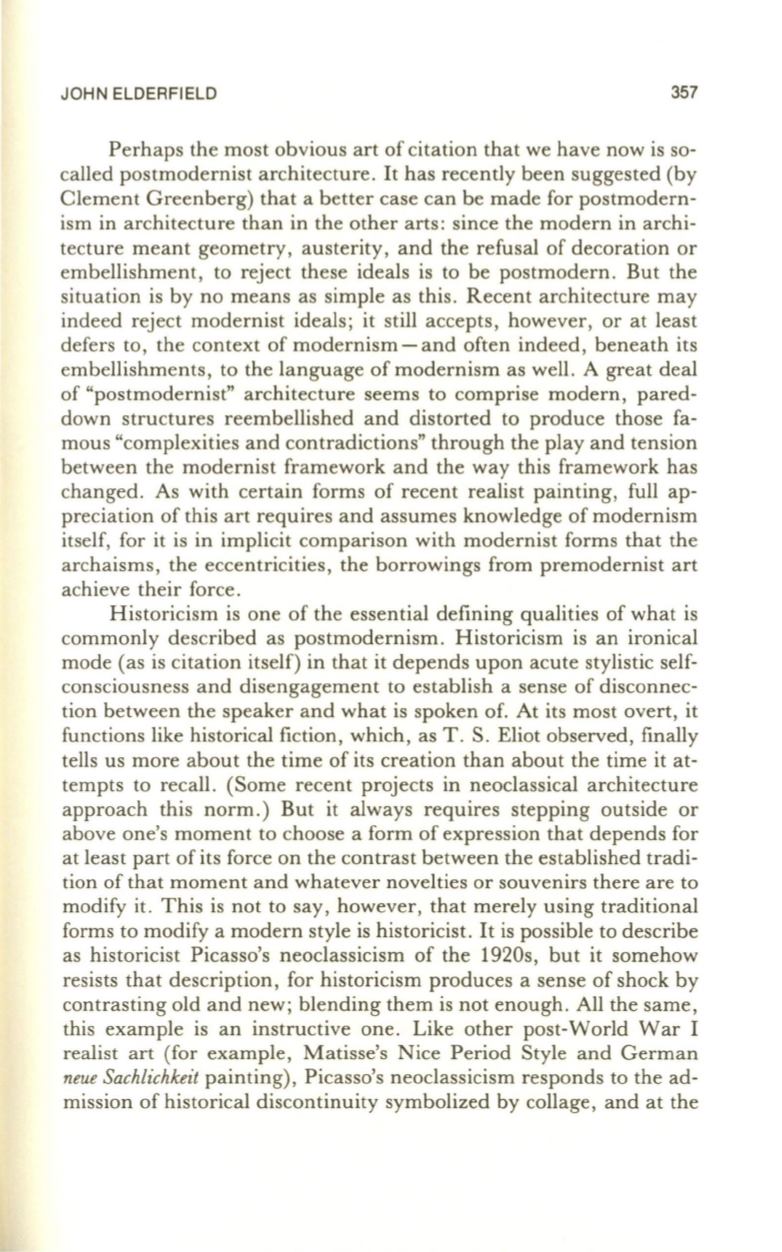
JOHN ELDERFIELD
357
Perhaps the most obvious art of citation that we have now is so–
called postmodernist architecture.
It
has recently been suggested (by
Clement Greenberg) that a better case can be made for postmodern–
ism in architecture than in the other arts: since the modern in archi–
tecture meant geometry, austerity, and the refusal of decoration or
embellishment, to reject these ideals is to be postmodern. But the
situation is by no means as simple as this. Recent architecture may
indeed reject modernist ideals; it still accepts, however, or at least
defers to, the context of modernism - and often indeed, beneath its
embellishments, to the language of modernism as well. A great deal
of "postmodernist" architecture seems to comprise modern, pared–
down structures reembellished and distorted to produce those fa–
mous "complexities and contradictions" through the play and tension
between the modernist framework and the way this framework has
changed. As with certain forms of recent realist painting, full ap–
preciation of this art requires and assumes knowledge of modernism
itself, for it is in implicit comparison with modernist forms that the
archaisms, the eccentricities, the borrowings from premodernist art
achieve their force.
Historicism is one of the essential defining qualities of what is
commonly described as postmodernism. Historicism is an ironical
mode (as is citation itself) in that it depends upon acute stylistic self–
consciousness and disengagement to establish a sense of disconnec–
tion between the speaker and what is spoken of. At its most overt, it
functions like historical fiction, which, as
T.
S. Eliot observed, finally
tells us more about the time of its creation than about the time it at–
tempts to recall. (Some recent projects in neoclassical architecture
approach this norm.) But it always requires stepping outside or
above one's moment to choose a form of expression that depends for
at least part of its force on the contrast between the established tradi–
tion of that moment and whatever novelties or souvenirs there are to
modify it. This is not to say, however, that merely using traditional
forms to modify a modern style is historicist. It is possible to describe
as historicist Picasso's neoclassicism of the 1920s, but it somehow
resists that description, for historicism produces a sense of shock by
contrasting old and new; blending them is not enough. All the same,
this example is an instructive one. Like other post-World War I
realist art (for example, Matisse's Nice Period Style and German
neue Sachlichkeit
painting), Picasso's neoclassicism responds to the ad–
mission of historical discontinuity symbolized by collage, and at the


